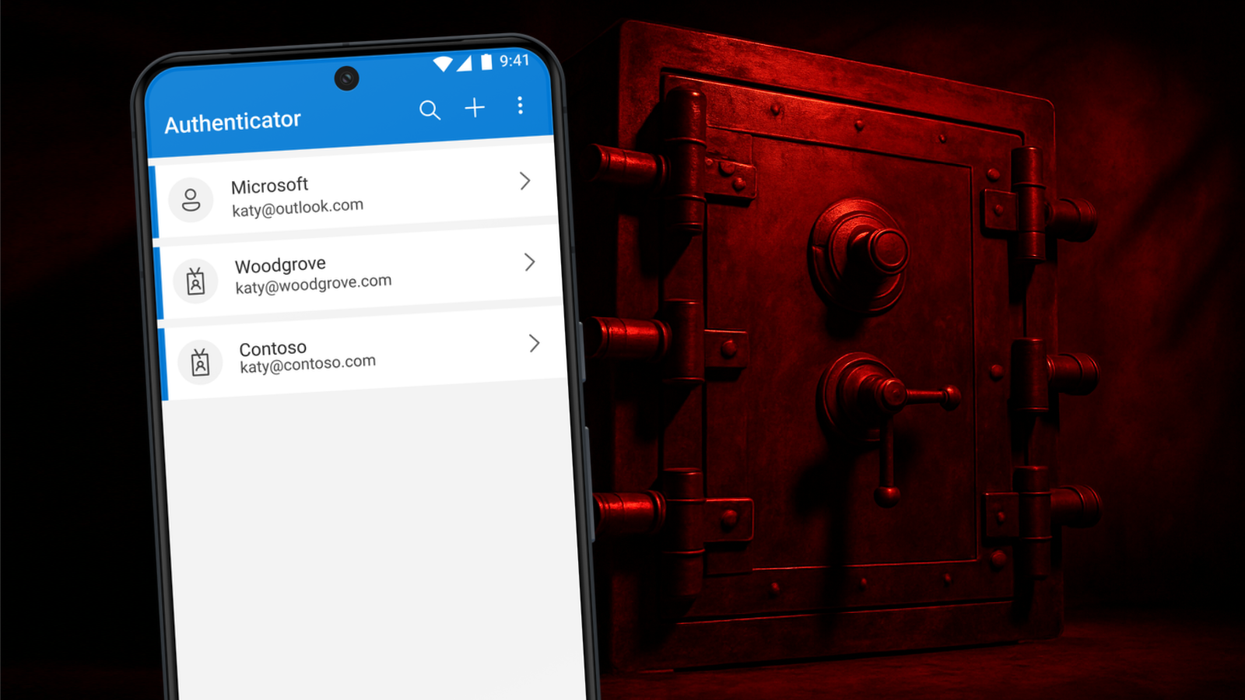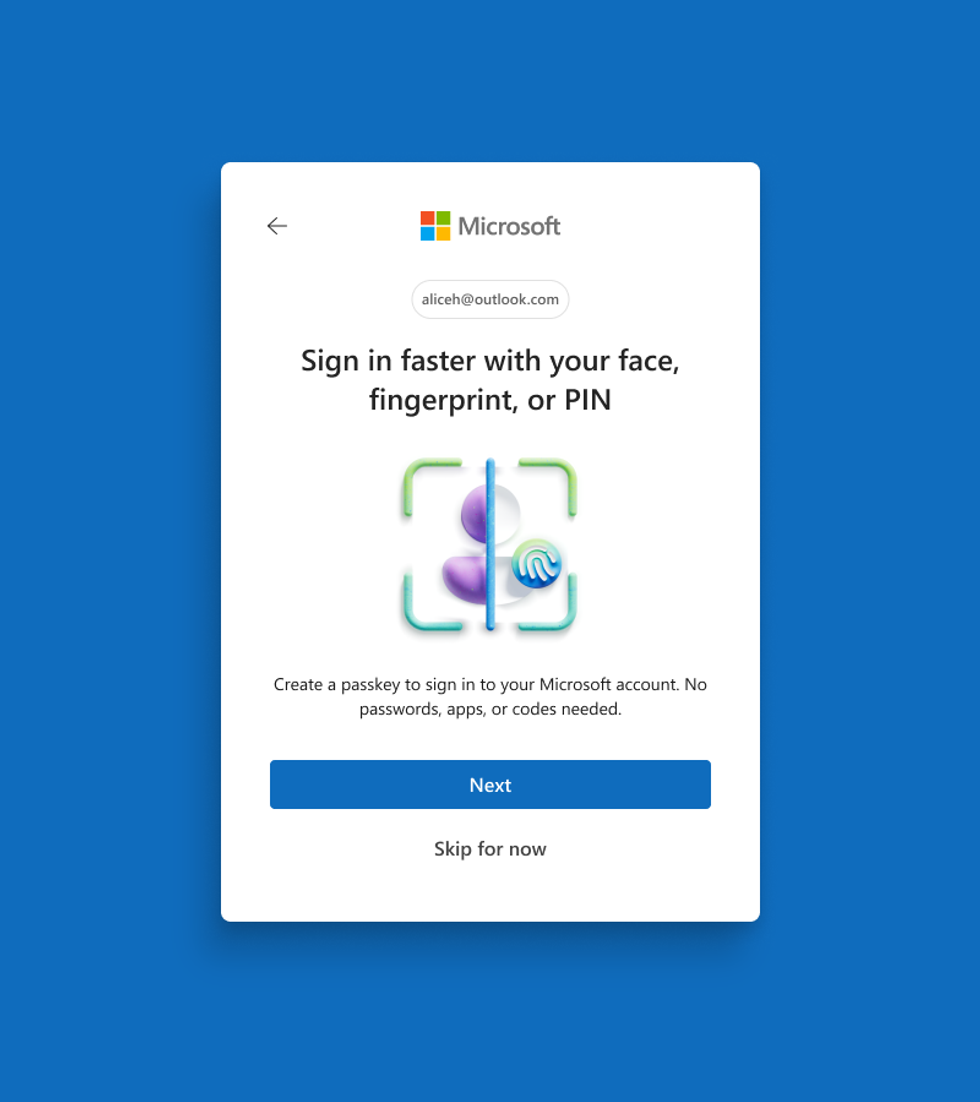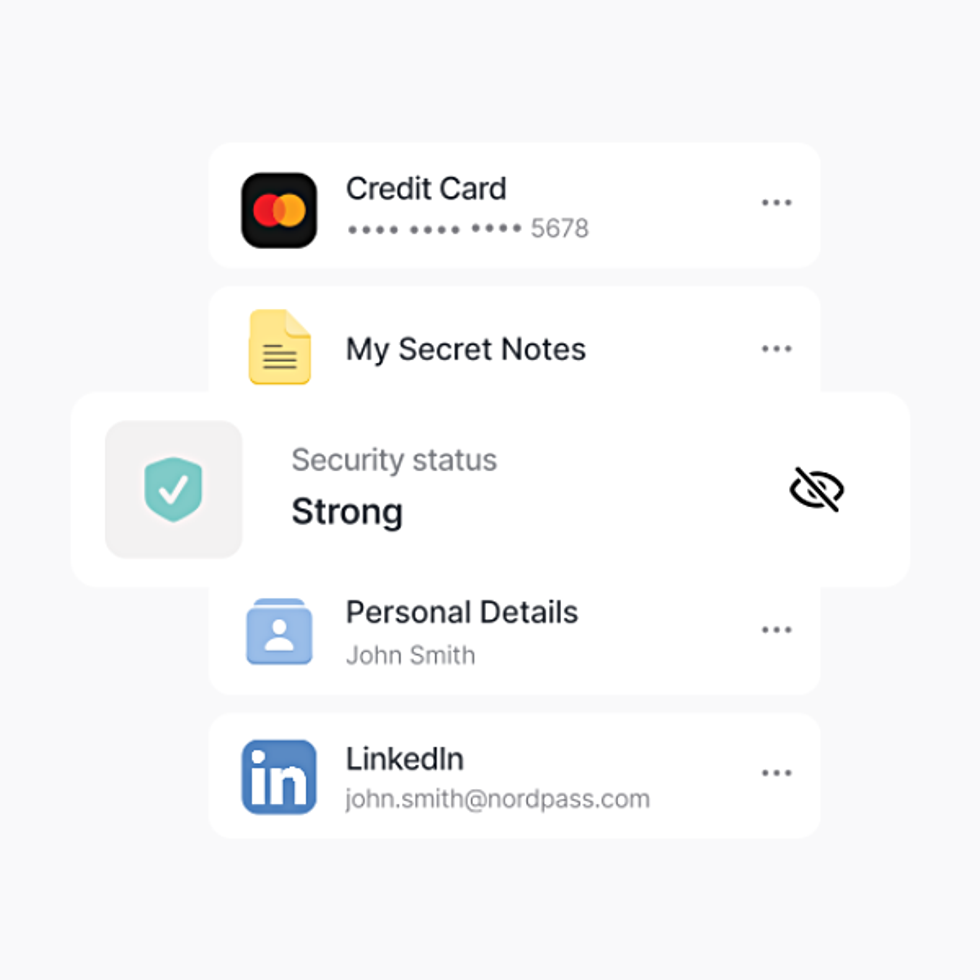Microsoft issues critical password warning to millions of Windows 10, Windows 11, and Microsoft 365 users

Microsoft Authenticator users can no longer store new passwords in the apps... and in just eight weeks, all of their login details will be wiped from the app
|MICROSOFT PRESS OFFICE | GB NEWS

All products and promotions are independently selected by our experts. To help us provide free impartial advice, we will earn an affiliate commission if you buy something. Click here to learn more
Major shake-up at Microsoft begins today
Don't Miss
Most Read
Latest
If you rely on Microsoft Authenticator to manage your passwords, you need to make a change now.
Starting today (June 2), Microsoft will no longer let you save new passwords in the Authenticator app. If you create a new online account, you'll need to find another service to encrypt and store your login details.
But the changes don't end there.
From July, you'll lose the ability to autofill all username and passwords using Microsoft Authenticator. This clever feature is supported across apps and websites you visit on your phone or tablet. At the same time, Microsoft will start to remove saved payment details, including credit card numbers, from the app.
From August, Microsoft will delete all saved passwords from the Authenticator app.
These changes will impact millions of users worldwide who depend on this free mobile app to offer two-factor authentication, passwordless sign-in, and autofill for your login details. It can be used for Microsoft accounts, work or school accounts, as well as other online accounts. Everything is encrypted and locked behind a fingerprint or facial scan, depending on the biometric security built into your device, or a PIN.

Microsoft Authenticator was designed to become a one-stop-shop for all of your online security, including generating secure passwords, encrypted and storing them, then allowing you to autofill the login details across websites and mobile apps with a single tap
|MICROSOFT PRESS OFFICE
With over 100 million downloads on the Google Play Store alone, Microsoft Authenticator is hugely popular. It's tightly integrated with Microsoft's own services, including operating systems like Windows 10 or Windows 11, as well as subscription services like Microsoft 365, which offers access to apps like Word, Outlook, Excel and PowerPoint.
An estimated 75 million users worldwide rely on the app to store passwords daily.
If you're one of the millions who depend on this service, act now to avoid losing access to your stored credentials.
The phase-out follows a strict three-stage timeline:
- June 2025 | You can no longer save new passwords in Microsoft Authenticator
- July 2025 | Autofill feature will stop working, preventing you from relying on Microsoft Authenticator to fill-in username / email address, passwords and login across websites and mobile apps. At the same time, save payment information including credit card details will be deleted from the app
- August 2025 | The final stage in the shake-up, Microsoft will permanentlyremote all saved passwords, with any generated passwords not previously saved also deleted
Microsoft has added a warning banner to the app stating: "Autofill via Authenticator ends in July 2025. You can export your saved info (passwords only) from Authenticator until Autofill ends."
The Redmond-based company emphasises that payment data will not automatically transfer to other services, requiring manual re-entry of card details.
About to lose your stored passwords in Authenticator? Switch to award-winning 1Password for FREE

The award-winning 1Password is designed to generate and store unguessable passwords as well as passkeys in an encrypted vault. Available across all of your devices, including iPhone and Android, Windows and Mac computers, iPad and other tablets — it's designed to make logging in as simple as the tap of a button. Its built-in WatchTower feature warns about data breaches that impact you. 1Password is currently free to test for 14 days with no obligation to subscribe
1Password
$2.99
$0
Password managers like Authenticator work by encrypting and storing your login details, then automatically filling them in when you visit websites or apps. This eliminates the need to remember dozens of different passwords whilst maintaining security. This popular category of applications offer features like cross-platform synchronisation, apps for multiple web browsers and devices, encrypted storage for your login credentials, and automatic breach monitoring.
Some of these apps let you temporarily share login details with friends and family. Software licences and Wi-Fi network passwords can also be stored in some of these services.
Why is Microsoft ditching this popular functionality from Authenticator? The decision is part of a strategic shift that consolidates all password management within its Edge browser, which currently holds just 5.2% of the global market share compared to Google Chrome's commanding 66.19%. The company has added a "Turn on Edge" button to Authenticator as part of its ongoing campaign to drive browser adoption.
Karolis Arbaciauskas, head of business product at NordPass, said: "Microsoft's decision to phase out password management from Authenticator represents a significant shift in the company's approach to digital security. It seems like Microsoft is simplifying credential management across different devices and bringing password management logic closer to the market-dominant model, which is already familiar to many users.”
“In addition, the company has a chance to increase the popularity of its browser. In theory, it’s a win-win situation. But people have various personal likes and dislikes, are often used to a particular ecosystem or a browser and may not wish to move. In that case, a dedicated password management solution might be a good idea since it can provide cross-platform synchronization across multiple browsers and devices, secure storage for credentials, and features like breach monitoring and encrypted sharing,” Arbaciauskas added in a chat with Techradar Pro.
While Microsoft Edge will replicate all of the same password features previously found in Microsoft Authenticator, the US company wants to eventually move its users away from passwords altogether. Earlier this year, Microsoft confirmed that it was blocking 7,000 attacks on passwords every second — almost double from a year ago.
As a result, it has decided to making all new accounts passwordless by default. Instead of being asked to think of a secure password with a mixture of lowercase and capital letters, numbers, and symbols — you'll be guided to set up a passkey when you create a new Microsoft account.

Microsoft Edge, which has replaced Internet Explorer as the default web browser installed on Windows, will now become the default repository for saved passwords
|MICROSOFT PRESS OFFICE
LATEST DEVELOPMENTS
- Netflix will be blocked on some Fire TV Sticks tomorrow
- Sky unleashes 'lowest prices' on broadband and TV
- Blockbuster upgrade coming to Samsung Galaxy, but only if your phone is on THIS list
- Best VPN deals
Passkeys have long been hailed as the harbinger of doom for traditional passwords.
Developed by the FIDO Alliance — an industry body with the aim of helping to "reduce the world’s over-reliance on passwords" with the likes of Apple, Google and Microsoft amongst its members, passkeys rely on the biometrics built into your devices. Using the same facial recognition or fingerprint scan that can unlock your iPhone, iPad, Android phone or tablet, Windows PCs... the device already in your hands can now verify your identity for websites and apps.
This removes the need for a separate password for each account. Given the weak passwords still used by millions of Britons, this shift should reduce the number of hacks.
 Starting this month, passkeys will be suggested as the default way to secure your Microsoft account for all new users ...existing users will need to take action to move away from passwords | MICROSOFT PRESS OFFICE | GBN
Starting this month, passkeys will be suggested as the default way to secure your Microsoft account for all new users ...existing users will need to take action to move away from passwords | MICROSOFT PRESS OFFICE | GBN Your saved passwords are synced with your Microsoft account, meaning they'll remain accessible through Edge even if you forget to export them before the deadline. However, if you prefer using a different browser or password manager, you must export your data before August.
To export passwords from Authenticator, navigate to Settings > Export passwords > Export, then import the saved file to your chosen password manager. Microsoft warns that exported passwords will no longer be encrypted, so you should quickly delete the file after transferring the data elsewhere.
You face a critical choice: either download Edge onto your devices to maintain seamless password access, or switch to a dedicated password management solution that offers cross-platform compatibility with your preferred browsers.
Save 50% on NordPass password manager

NordPass is a secure password manager that works across your favourite devices, including iPhone and Android, Windows and Mac computers, iPad and other tablets ...it will evaluate your password strength, autofill login details for you, and warn about any data breaches on the Dark Web that impact you. It's a one-stop-shop to improve your online security and fightback against hackers from the team behind the award-winning NordVPN
NordPass
$2.39
$1.19
More From GB News










